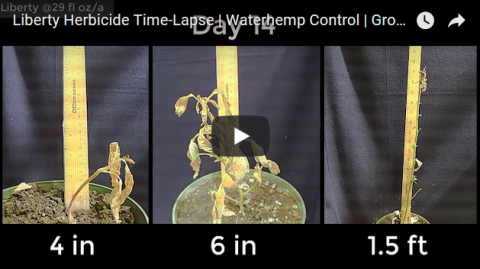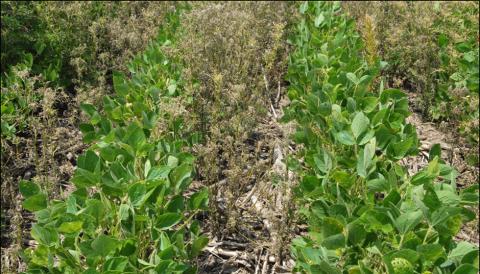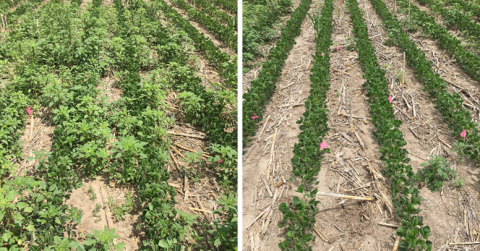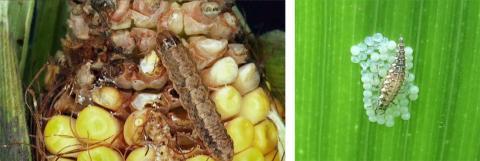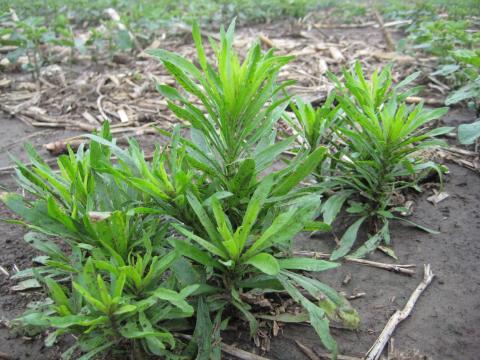Consider Weed Growth Stage for Optimum Control with Liberty Application
May 23, 2018
Consider these three guidelines to ensure maximum weed control with Liberty in LibertyLink corn and soybean and view a time-lapse video demonstrating how quickly waterhemp regrows when treatment occurs after the optimal weed height of 4 inches or less.
Herbicide Options for Managing Glyphosate-resistant Common Ragweed in LibertyLink Soybean
March 1, 2018
Results from a 2017 weed management trial on glyphosate-resistant ragweed indicated two applications were often more efficient and cost effective than either three applications or one application of herbicide.
Frogeye Leaf Spot Resistance Increasing in Soybean
February 21, 2018
While not close to Nebraska yet, fungicide-resistant frogeye leaf spot has been confirmed in eastern Iowa. Ward off problems here by implementing integrated management practices.
Considerations for Managing Herbicide-Resistant Weeds in Soybeans: Spring Burndown
April 28, 2017
One of the challenges with spring burndown application is timing. Wet and windy conditions can delay spraying and under these conditions weeds can grow significantly in a few days. Waiting until planting to spray troublesome weeds such as marestail may be too late to achieve adequate control. In addition, waiting until soybean planting limits the available herbicide options since there are relatively few labeled effective burndown chemicals for spraying at this time. The following section identifies key treatment aspects to consider for several resistant varieties in Nebraska.
Timing is Critical with Pre-Emergence Flumioxazin-Based Herbicides in Soybeans
April 26, 2017
Soybean planting has started in Nebraska and it’s time to apply pre-emergence herbicides. Six weeds have evolved resistance to glyphosate in Nebraska. The best way to effectively control resistant and other hard-to-control weeds is by applying residual, pre-emergence herbicides with multiple effective modes of action. Several new herbicides recently registered in soybean are in this category and could be considered.
Keys to Managing Herbicide Resistance in Soybeans
April 6, 2017
Are last year's weed escapes still haunting you? Applying these six key management practices and five key timings can help you improve control of herbicide-resistant weeds this year.
Which Bt Traits Do You Need to Purchase?
March 24, 2017
When it comes to buying corn seed, one way to save money can be to ensure that you don't invest in GMO insect protection traits that you do not need for your particular farm or field. Which corn rootworm, western bean cutworm, or European corn borer traits do you need? This article can help you determine which of the nine types of Bt proteins might best serve your needs.
Status of Herbicide-Resistant Weeds in Nebraska
March 20, 2017
Nine weed species in Nebraska have now evolved resistance to at least one group of herbicides. Six weed species — common ragweed, common waterhemp, marestail, kochia, giant ragweed, and Palmer amaranth — have confirmed resistance to glyphosate. Rotate herbicide sites of action and weed control practice to avoid contributing to this trend.
